What are potato eyes? Many new gardeners who have no experience growing potatoes ask this question. If you are also looking for an answer to this query, you are in the right spot!
Continue reading to learn what potato eyes actually are, how to use them, and if you can plant sections of potatoes with only one eye.
Let’s get started!
Contents
What are Potato Eyes? Explained!
When a potato is mature enough to begin producing a new potato plant, it will produce what are known as “eyes,” which are really sprouts.
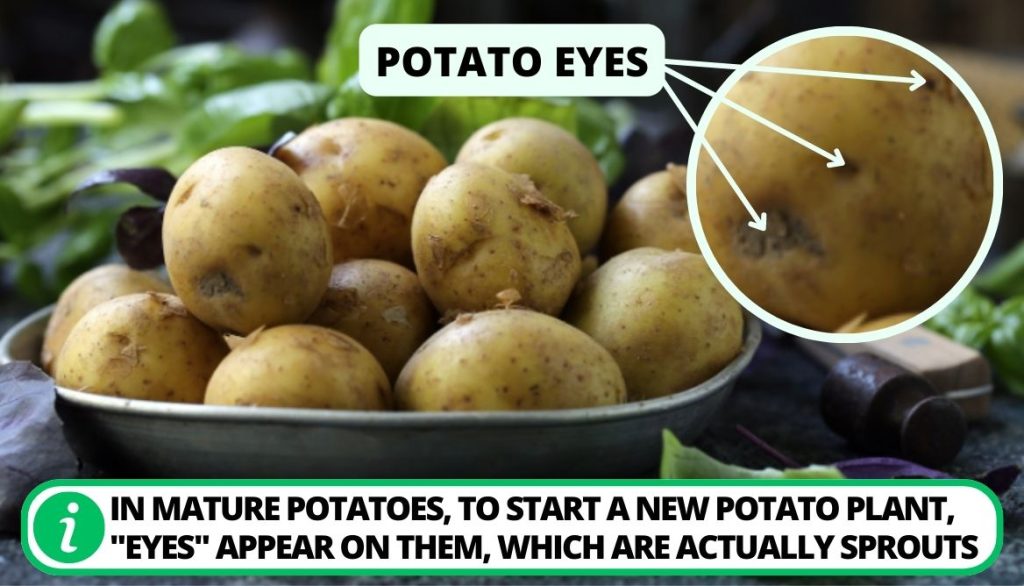
Although these potato sprouts appear harmless at first glance, Poison Control warns that eating them can lead to:
- Nausea,
- Vomiting,
- Cramps, and
- Diarrhea.
This can happen due to the high levels of the natural toxins solanine and chaconine they contain. Glycoalkaloids are present throughout the potato, although they are most concentrated in the epidermis, leaves, blossoms, and sprouts.
Does Every Potato Have Eyes?
Potatoes are vegetative producers to sprout and grow, they require an eye. Hence, every potato has it.
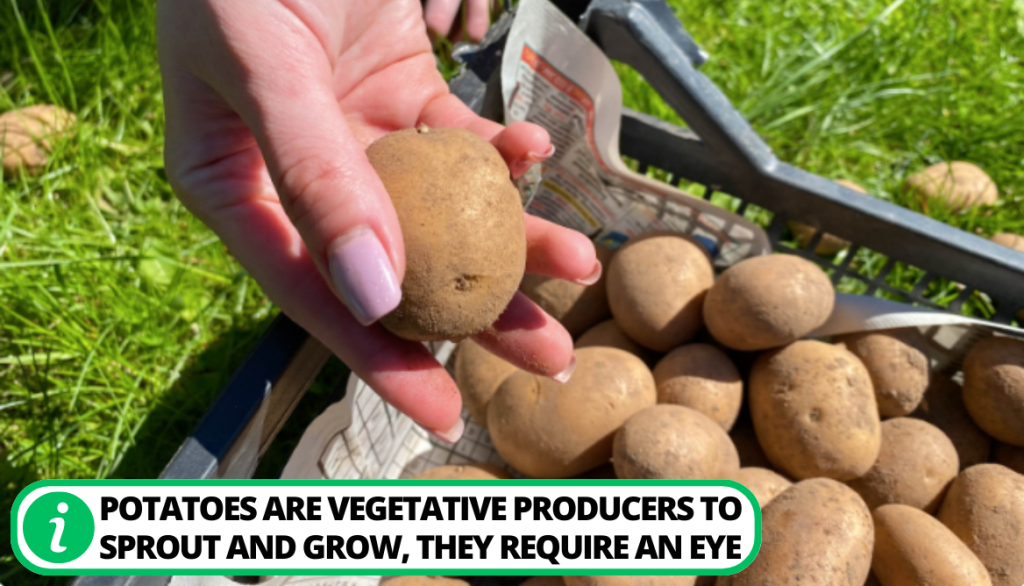
However, a suppressor to some store-bought potatoes to avoid sprouting may be applied, a chemical bud. If a potato tuber has been treated, it will still show grooves or indentations where a sprout will develop, but it will not sprout.
Important Factors for Creating Eyes in Potatoes
When potato eyes begin to emerge depends on a number of different circumstances. The critical elements are:
- Temperature,
- Humidity,
- Light,
- Dormant period.
Let’s analyze each one in more detail.
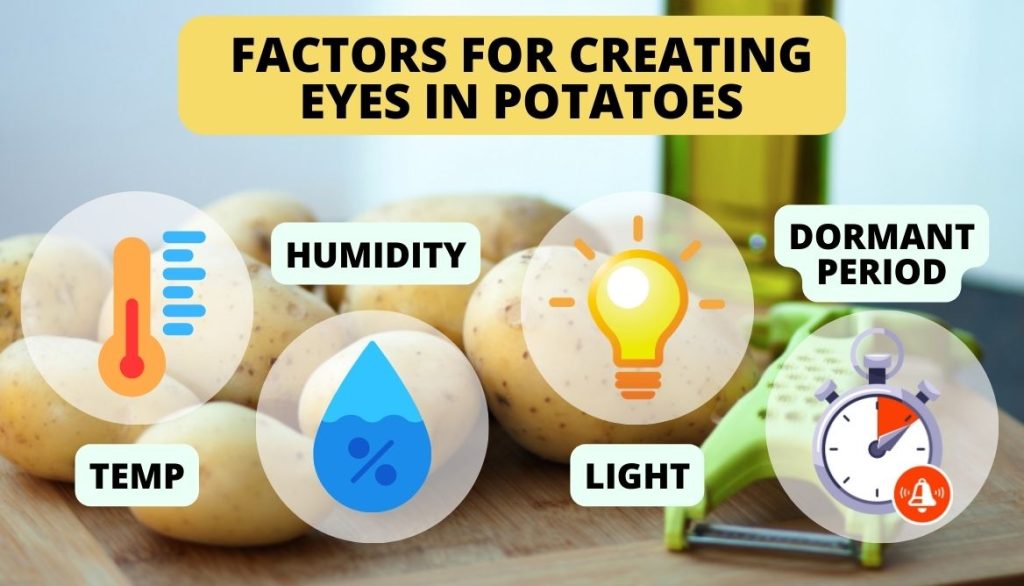
1. Temperature
Cooler temperatures are preferable for keeping potatoes to avoid sprouting; keep potatoes cold if you need to wait until the growing season is near.
- At a temperature of around 70 degrees Fahrenheit (21 degrees Celsius), you can encourage the growth of sprouted potatoes.
- Get ready around 2 weeks ahead of planting time, or 5 weeks before the average last spring frost date.
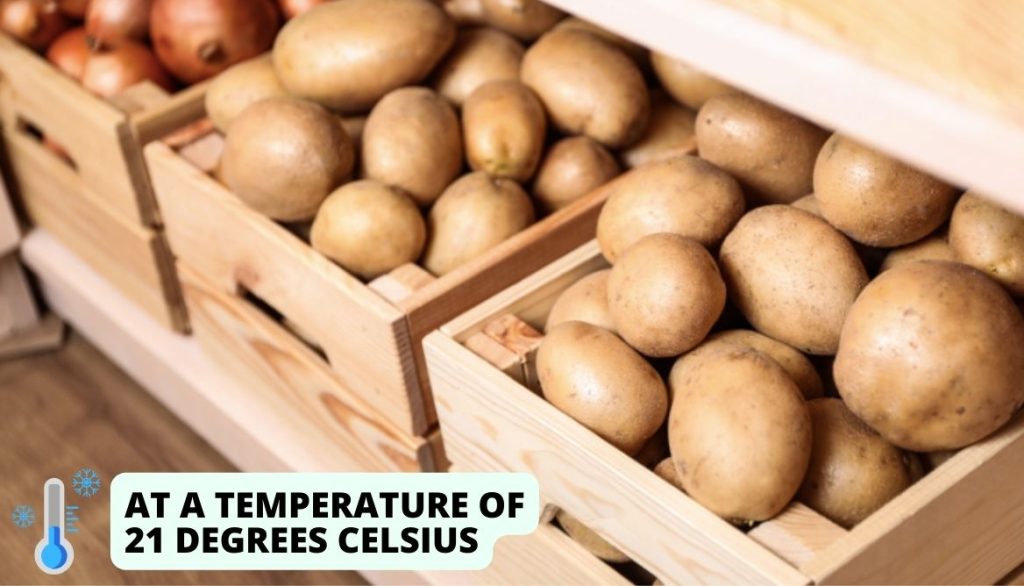
2. Humidity
It’s odd, but storing potatoes in a dry environment can actually ruin them. In fact, if you keep them in this atmosphere, potatoes will shrivel and die. This shriveling and drying might delay germination. So, keep potatoes in a humid environment to extend their shelf life.

3. Light
To germinate, potatoes require no outside light. If you leave potato tubers in the ground during the winter, they will normally sprout in the spring.
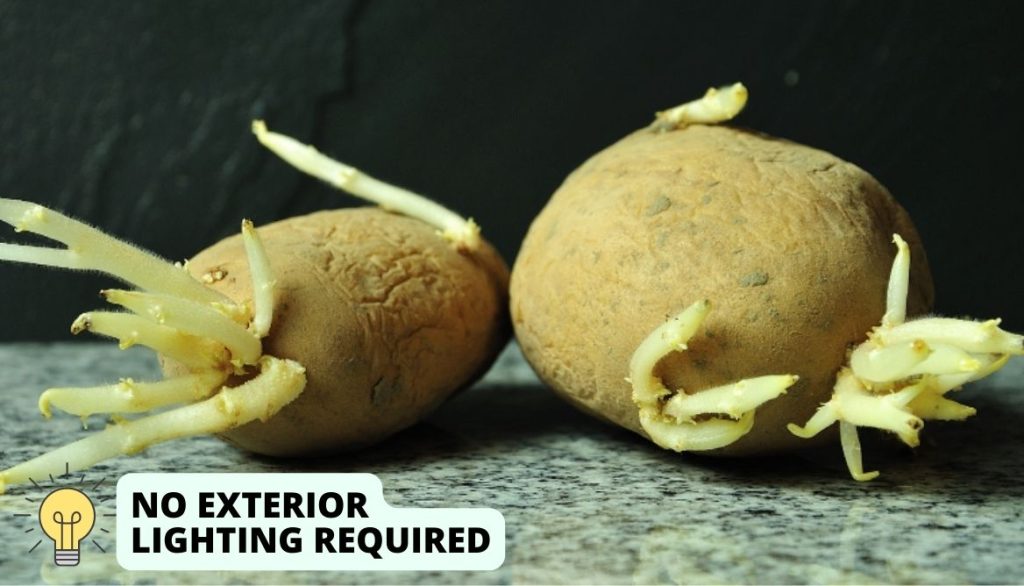
Some research suggests that exposing potato plants to light might reduce the length of their sprouts. This might come in handy if they begin to grow sooner than intended or if they get overly lengthy.
4. Dormant Period
It is necessary to allow potatoes to enter a dormant state (or “rest period”) before they may begin to grow. A potato plant will not sprout before its time because of this dormant phase.
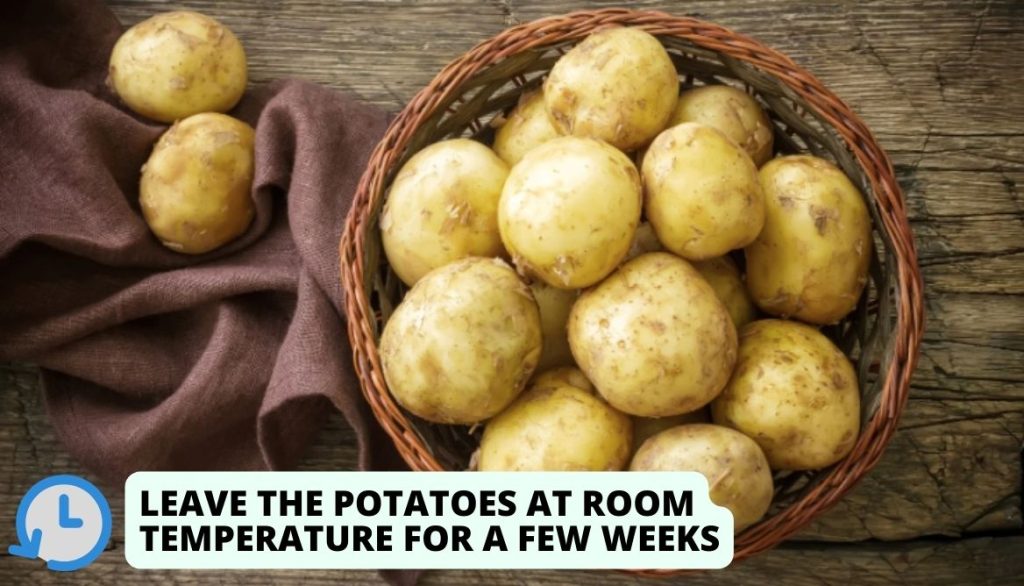
- A sprouted potato that germinates in the late fall or winter, for instance, has almost little chance of survival after it emerges from the earth. That’s why it’s unusual for a freshly dug potato to start sprouting immediately away.
- The dormancy stage of potatoes can be broken by either extremely cold or warm conditions, according to a university in Texas.
- Once the dormancy phase is through, leaving the potato plants at room temperature for a few weeks will generally be enough for them to wake up and will cause potato sprouts.
For more insights, check out this helpful video.
Do You Put the Eyes Up or Down? Direction Of Eyes For Plant Potatoes Revealed
Plant potatoes with the eyes facing up. Sooner or later, the eyes (or sprouts) will emerge from the ground. If they are standing upright, they will have an easier time. You can divide a sprouted potato into two or more pieces for planting if it has sprouts or eyes on both sides. However, there must be at least one eye on each piece of sprouting potatoes.
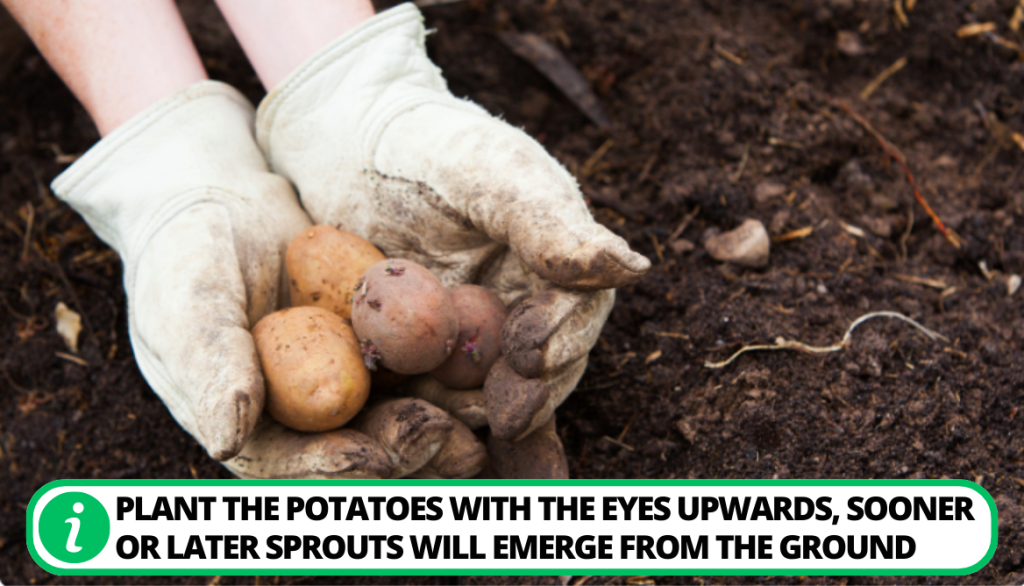
Too little energy is expended in the process of reassembling the components, therefore keeping them from being too tiny.
Some helpful tips include:
- If you decide to chop a sprouting potato into pieces, do it carefully to prevent the spread of illness.
- A callus (scar tissue) will grow over the sliced area of the potato if you keep the pieces in a dark environment for 4 to 7 days.
- After planting the potato pieces, this callus will act as a barrier against illness.
Best Way For Utilizing Ungerminated Potatoes
The greatest method of avoiding sprouted potatoes is to of course use them. Luckily, these low-cost, nutrient-rich tubers can be utilized in a wide variety of tasty preparations. This includes:
- Hot honey butter mashed potatoes.
- A quick, creamy Instant Pot potato soup.
- A cheese-laden, spotlight-stealing side dish of potatoes Romanoff.
Still, scared you won’t have enough time to finish that bag of potatoes? Fear not; you can also store potatoes in the freezer!
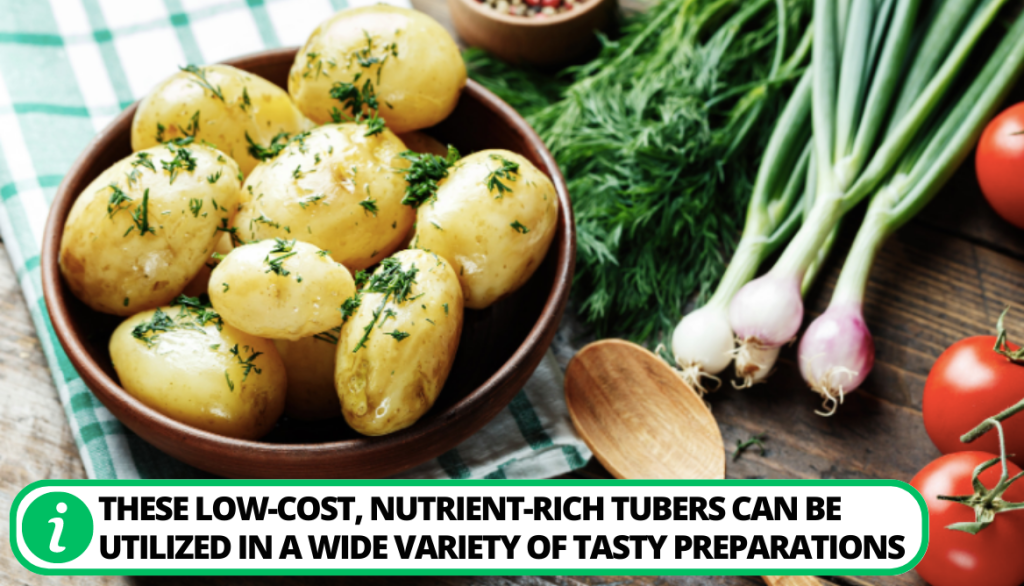
Is it Safe to Eat Potato Sprouts?
And what about sprouted potatoes’ safety? The concentration of glycoalkaloids in sprouted potatoes increases as it germinates. Since eating sprouted potatoes might result in a high intake of these substances, it is best to avoid doing so.
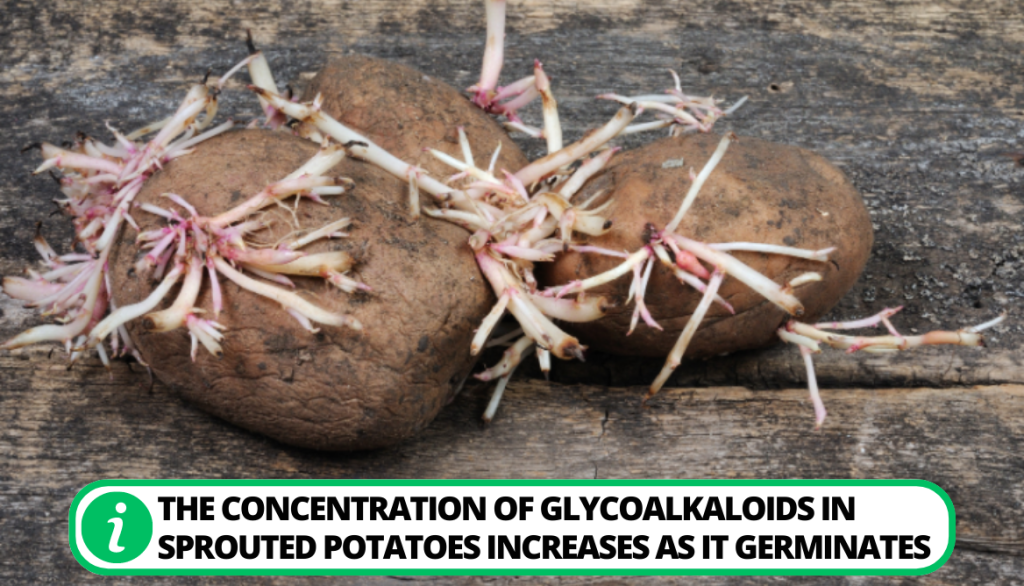
It might take anywhere from a few hours to a full day after eating sprouting potatoes for symptoms to manifest. Here are more details on why this is unsafe:
- Impact on health: Glycoalkaloid overdose causes nausea, vomiting, and diarrhea at lower dosages. Low blood pressure, fast heart rate, fever, headache, disorientation, and maybe death can result from excessive consumption.
- Influence on pregnancy: Preliminary evidence from a few small studies suggests that consuming sprouted potatoes or potato sprouts while pregnant may raise the kid’s chance of being born with a disability. Therefore, it may be best for pregnant women to avoid eating sprouted potatoes.
How to Make Sprouted Potatoes Safe to Eat
Listed below are the two easy ways to ensure safety:
- You can make a sprouted potato safe to eat again by either using a peeler to peel potatoes in a way that removes the sprouts.
- You can also simply use a knife and cut off the potato sprouts at once.
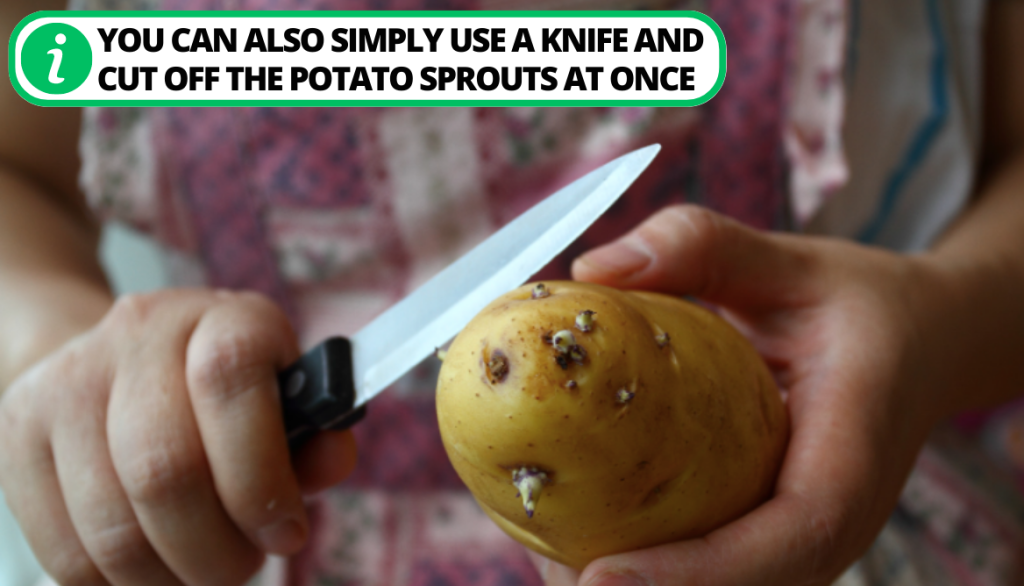
Can You Grow a Potato Tuber from a Section If You Only Have One Eye?
While you could grow a potato plant from a one-eyed cutting, the resulting plant would be much weaker. Not every planted tuber will immediately produce a new set of eyes.
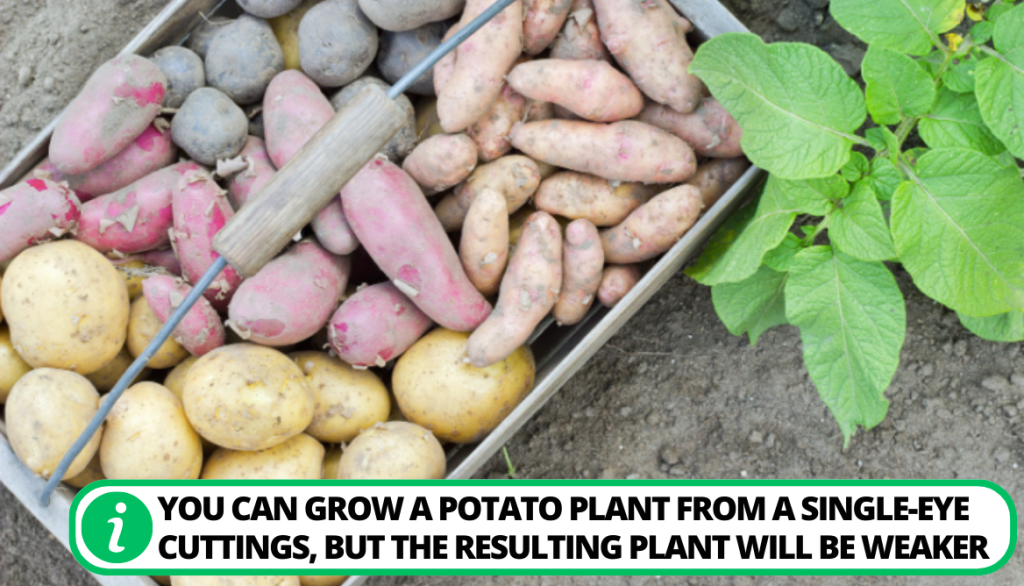
FAQ
Are potato eyes OK to eat?
No, potato eyes are not ok to eat. They have dangerous chemicals that can cause various diseases and symptoms such as nausea, vomiting, and low blood pressure.
Why are they called potato eyes?
They are called potato eyes because the area where the bud starts to appear looks like an eye.
Should you remove potato eyes?
You should not remove the eyes from a new potato plant that is still growing, as the eyes are what make them sprout. However, once the potato tuber has grown fully, you must remove the eyes before consuming the sprouted potato.
What is the scientific name of potato eye?
The scientific name for a potato eye is called ‘Axillary bud’.
Can You Plant Sprouted Potatoes?
Of course! Sprouted potatoes may be planted and will produce additional potatoes. If you treat sprouted potatoes properly, you may grow several potato plants from one and harvest many new potatoes.
Conclusion
The potato eyes are sprouts so that potatoes can give a new crop. Always plant sections of potatoes that have more than one eye, preferably 3-4. Keep the potatoes in a humid environment with a temperature of around 70 F for optimal sprouting and growth.
However, if you are planning on consuming your potatoes, the eyes can be dangerous. They can cause various illnesses ranging from vomiting and diarrhea to low blood pressure and a fast heart rate, both of which could be fatal. So always remember to peel potatoes or cut them in a way that the eyes are removed cleanly.
Do you have any queries regarding the potato eyes? Let us know in the comments.
- How to Get Potatoes to Sprout Eyes: Detailed Growing Guide with 3 Options - July 31, 2023
- Weight of a Medium Potato: Revealed in Detailed Guide - July 29, 2023
- Maris Piper Potatoes: 9 Substitutes You Should Know About - July 27, 2023
Hello! I’m Jessica Zander, a garden coach and consultant based in the Boston area (zone 6b), offering virtual consultations across the country and Canada.
I’ve been passionate about gardening since the early 1990s, and in 2022, I launched You Can Do It Gardening to empower individuals to feel more confident in their gardening endeavors.
Following a 30-year career in nonprofit finance and operations, I transitioned out of that field in mid-June of 2023 due to the growing demand for coaching services. Interestingly, my years of presenting financial statements to boards and finance committees proved to be valuable experience for teaching people about gardening! I enjoy sharing skills, providing guidance and suggestions, and collaborating efficiently with clients to make significant improvements to their outdoor spaces, both small and large. I also regularly teach at the Arlington Continuing Education and Cambridge Adult Education.
My approach is direct and practical, akin to Mary Poppins, but tailored to your garden. Clients find satisfaction in saving money and taking pride in their own gardening achievements.

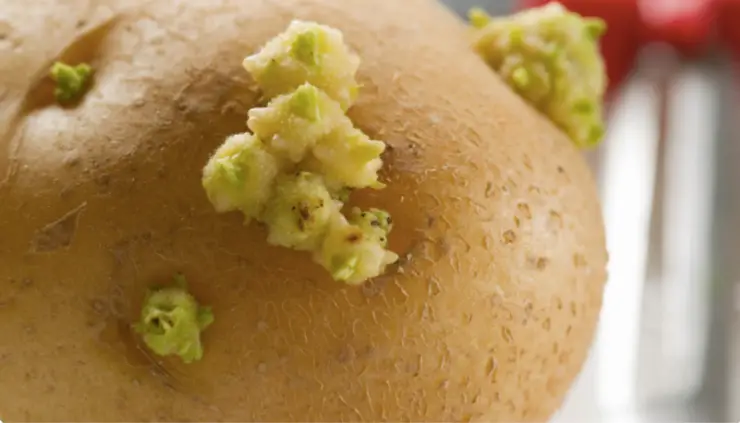
Add comment